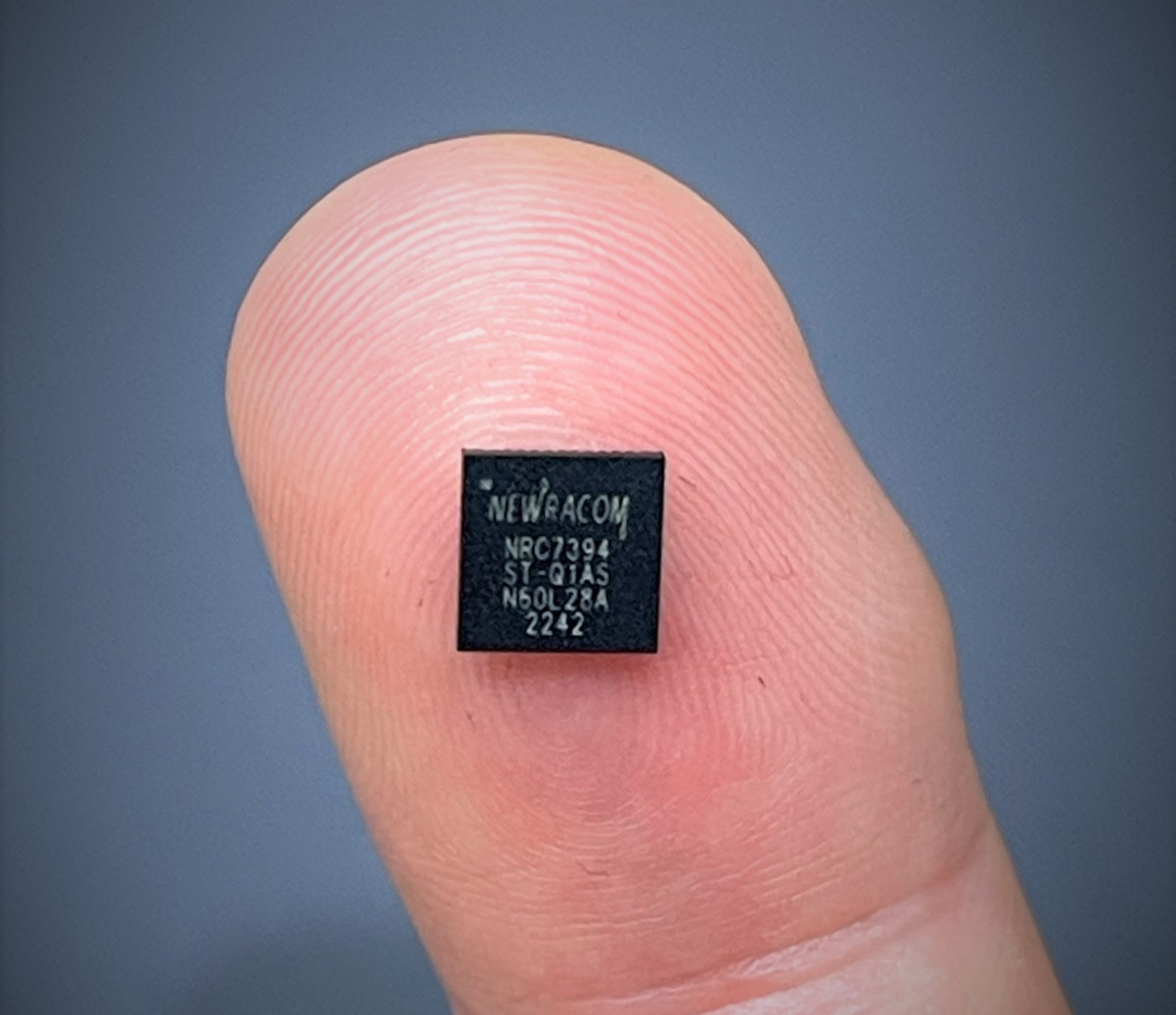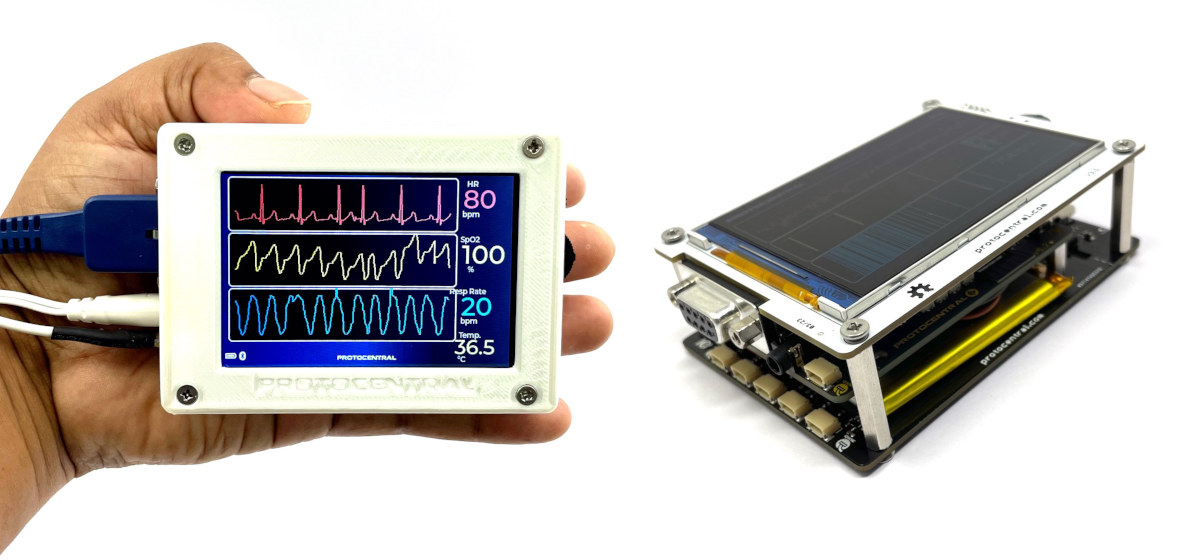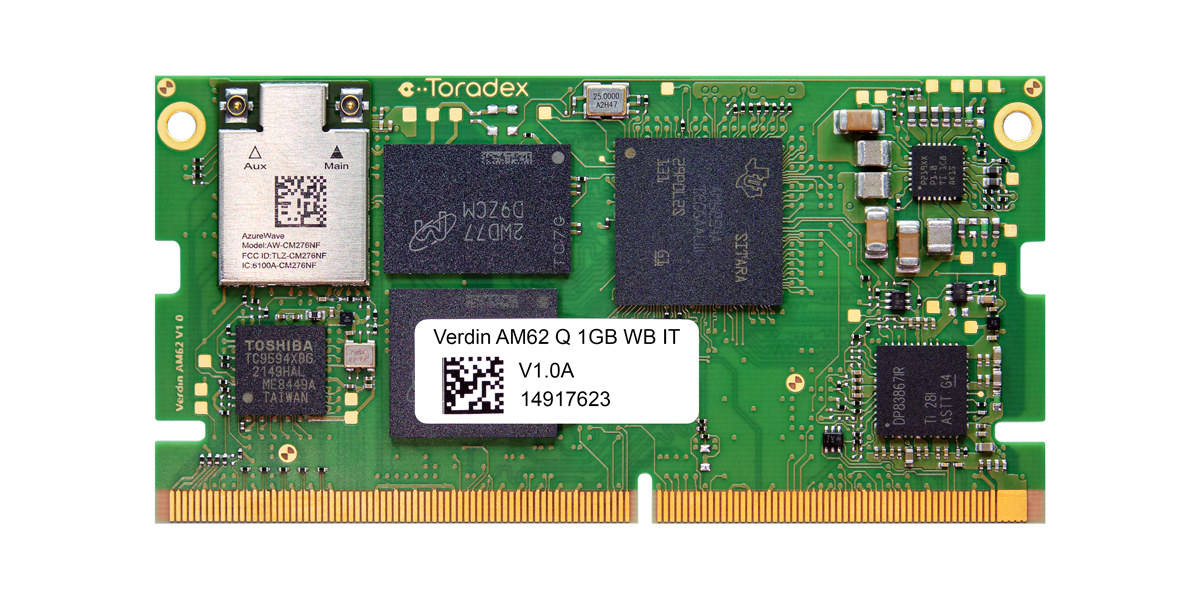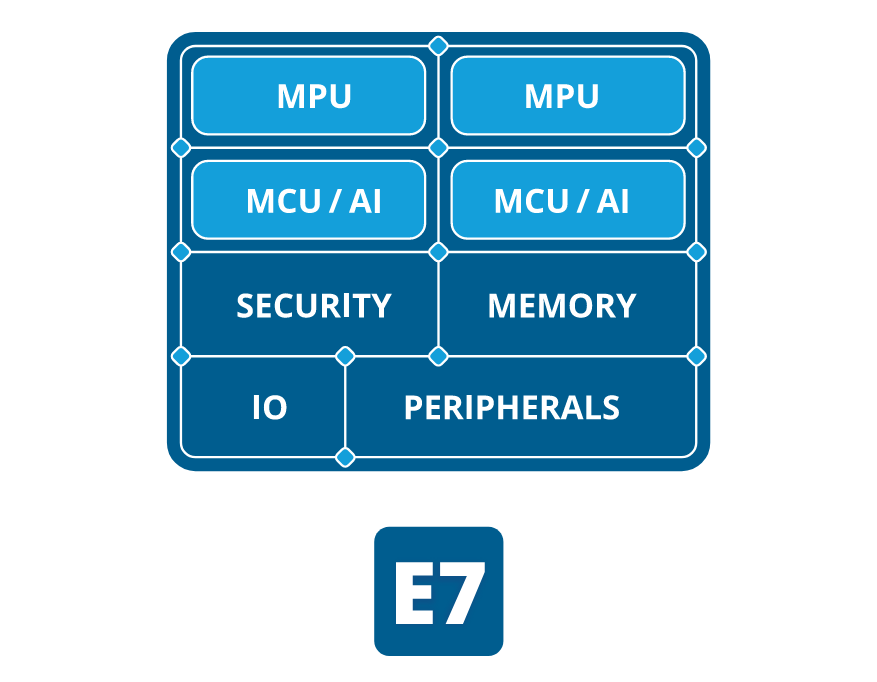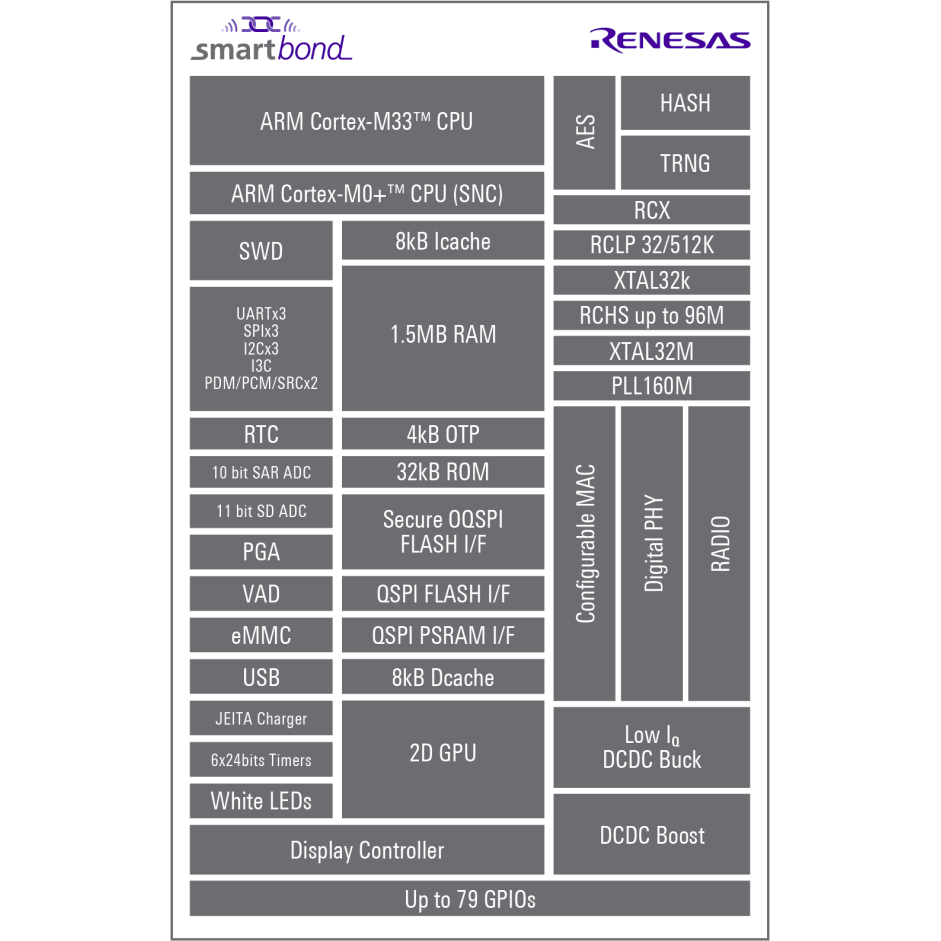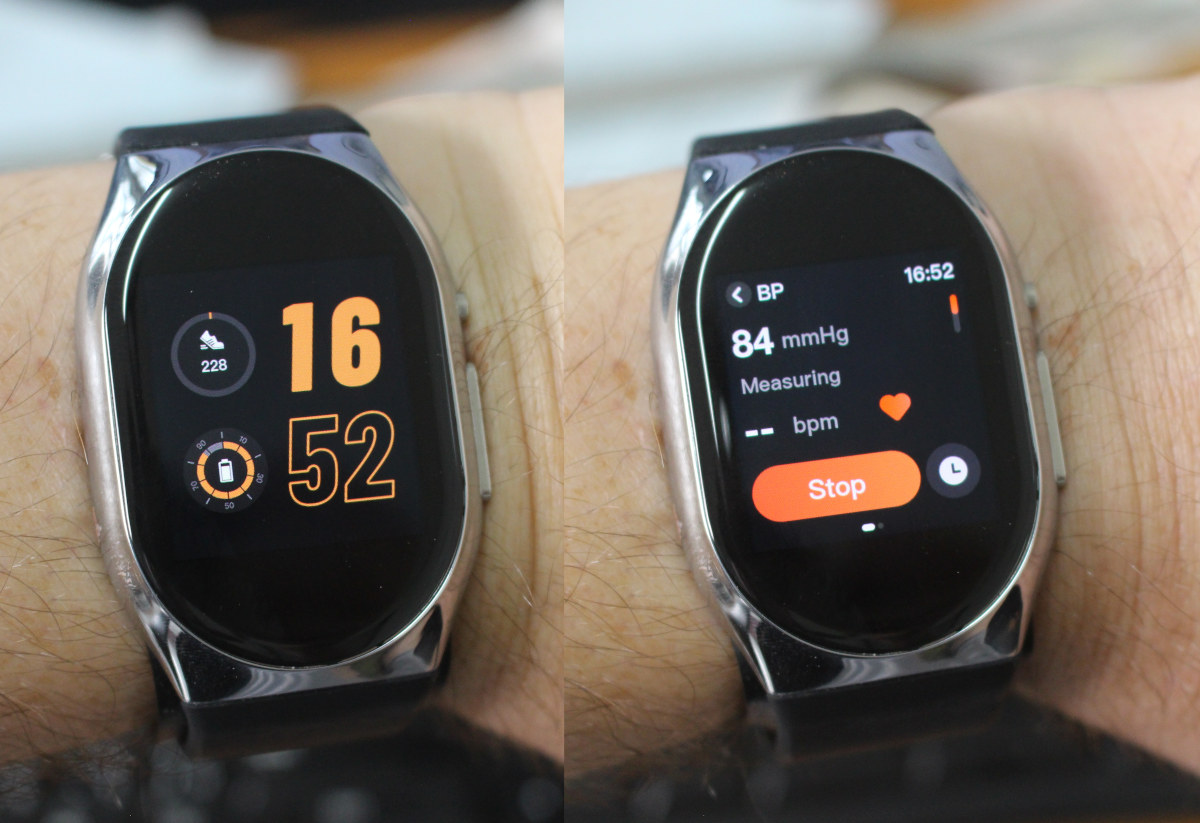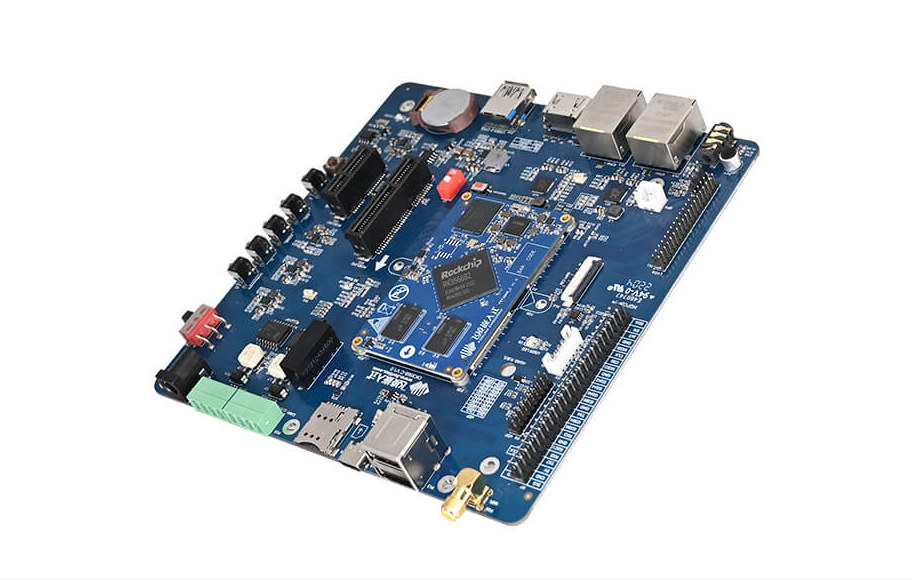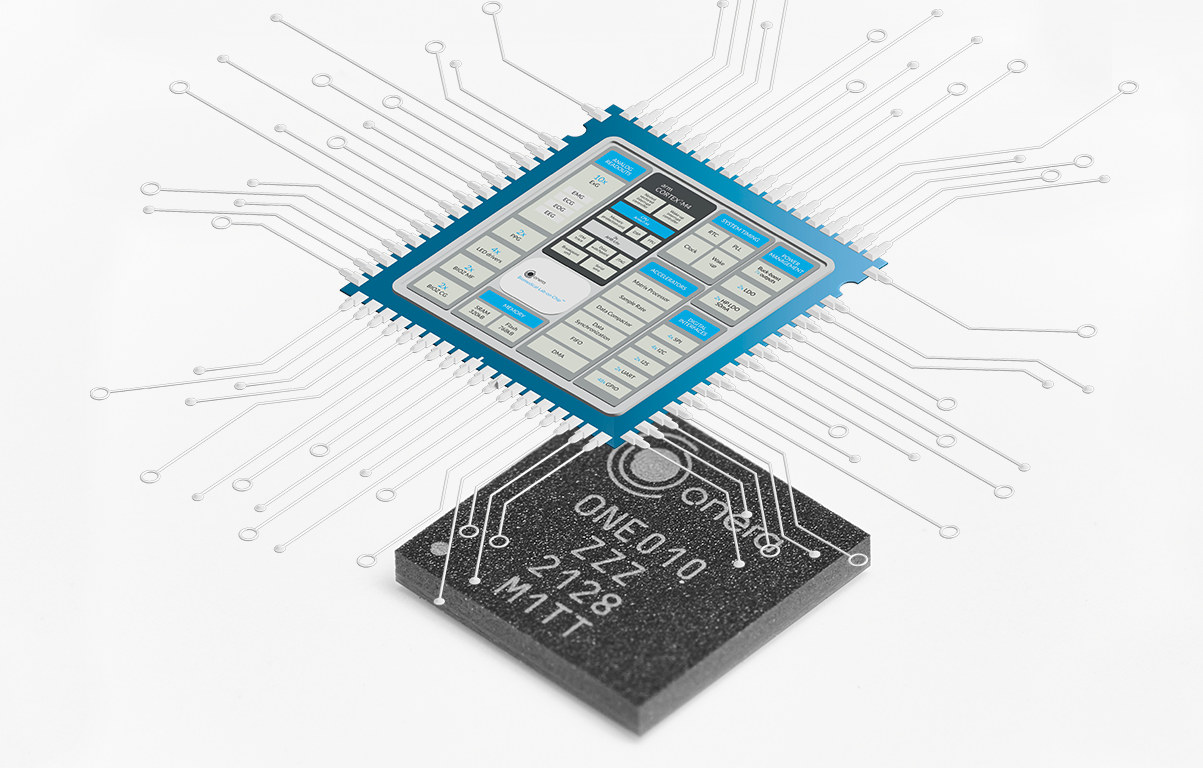NEWRACOM has just introduced the NRC7394 Wi-Fi HaLow Arm Cortex-M3 SoC with higher power efficiency and lower cost than the previous generation NRC7292 Cortex-M3/M0 HaLow SoC and available in a 6x6mm package. I first wrote about the 802.11ah standard in 2014. Also known as the WiFi HaLow (consumers name), it operates in the 900 MHz band, offers a longer range and lower power consumption for items like IP cameras, and the first products came to market in 2021. I was expecting a flood of new WiFi HaLow devices in 2022 in my year 2021 round-up and it was not exactly a prescient prediction as it never happened. But maybe the new NRC7394 SoC will help make WiFi HaLow devices more popular by lowering the costs and further improving battery life. NEWRACOM NRC7394 key features: CPU – Arm Cortex-M3 core @ 32 MHz for IEEE 802.11ah WLAN and application Connectivity Full […]
HealthyPi 5 WiFi & BLE biosignal-acquisition sensor platform captures body temperature, ECG, PPG, SpO₂, and other vitals (Crowdfunding)
HealthyPi 5 is an open-source sensor platform for biosignal acquisition based on Raspberry Pi RP2040 microcontroller and ESP32-C3 WiFi & BLE module used to capture vitals such as electrocardiogram (ECG), respiration, photoplethysmography (PPG), oxygen saturation (SpO₂), and body-temperature data. It is a complete redesign of the HealthyPi v4 Raspberry Pi HAT with many of the same features. While the HealthyPi 5 also follows the Raspberry Pi HAT form factor and can be connected to a Raspberry Pi SBC to analyze the data, it can also be used as a standalone device with the processing handled by the RP2040 dual-core Cortex-M0+ microcontroller and connectivity through an ESP32-C3 wireless module, and data visualized on a 3.5-inch SPI display or a smartphone over WiFi or Bluetooth. HealthyPi 5 specifications: MCU – Raspberry Pi RP2040 dual-core Arm Cortex-M0+ microcontroller @ 133 MHz with 264 KB SRAM Wireless Module – ESP32-C3 RISC-V module with 2.4 […]
Toradex Verdin AM62 – An entry-level Sitara AM623/AM625 SoM for Industry 4.0, Smart Cities, Healthcare…
Toradex Verdin AM62 is a system-on-module based on Texas Instruments AM62 Cortex-A53/M4 processor with up to 1GB LPDDR4 RAM and 8GB eMMC flash that is the most affordable system-on-module from the company’s Verdin family. The module also comes with a Gigabit Ethernet PHY and an optional WiFi 5 and Bluetooth 5 module and exposes various interfaces through its edge connector such as dual Gigabit Ethernet, MIPI DSI and LVDS display interfaces, a MIPi CSI-2 camera interface, and CAN FD, and more. Toradex Verdin AM62 specifications: SoC – Texas Instruments Sitara AM623/AM625 with up to 4x Arm Cortex-A53 cores @ 1.4GHz, 1x Arm Cortex-M4F @ 400MHz, optional 3D GPU with support for OpenGL 3.x/2.0/1.1 + extensions, Vulkan 1.2 (AM625 only) System Memory – Up to 1GB LPDDR4 (16-bit) Storage – Up to 8GB eMMC flash Networking Texas Instruments DP83867IRRGZR industrial-grade Gigabit Ethernet PHY Optional Wi-Fi 5 and Bluetooth 5 module (AzureWave […]
Alif Ensemble Cortex-A32 & Cortex-M55 chips feature Ethos-U55 AI accelerator
Alif Semiconductor’s Ensemble is a family of processors and microcontrollers based on Arm Cortex-A32 and/or Cortex-M55 cores, one or two Ethos-U55 AI accelerators, and plenty of I/Os and peripherals. Four versions are available as follows: Alif E1 single-core MCU with one Cortex-M55 core @ 160 MHz, one Ethos U55 microNPU with 128 MAC/c Alif E3 dual-core MCU with one Cortex-M55 core @ 400 MHz, one Cortex-M55 core @ 160 MHz, one Ethos U55 with 256 MAC/c, one Ethos U55 with 128MAC/c Alif E5 triple-core fusion processor with one Cortex-A32 cores @ 800 MHz, one Cortex-M55 core @ 400 MHz, one Cortex-M55 core @ 160 MHz, one Ethos U55 with 256 MAC/c, one Ethos U55 with 128MAC/c Alif E7 quad-core fusion processor with two Cortex-A32 cores @ 800 MHz, one Cortex-M55 core @ 400 MHz, one Cortex-M55 core @ 160 MHz, one Ethos U55 with 256 MAC/c, one Ethos U55 with […]
Renesas SmartBond DA1470x Bluetooth 5.2 LE SoC features a 2D GPU
I would not usually ask myself “is there a GPU?” in a Bluetooth LE SoC, but that’s exactly what Renesas SmartBond DA1470x Bluetooth 5.2 LE microcontroller offers with a 2D GPU used to accelerate the rendering of user interfaces in wearables, healthcare devices, home appliances with displays, industrial automation and security systems, as well as consoles in e-bikes and gaming equipment. The DA1470x also comes with a Cortex-M33 application core, a Cortex-M0+ sensor node controller, 1.5MB SRAM, and an ultra-low-power hardware VAD for always-on audio processing, as well as various peripherals. Specifications: CPU cores Arm Cortex-M33 core @ up to 160 MHz for the application Arm Cortex-M0+ core acting as a sensor node controller (SNC) GPU – 2D GPU for advanced graphics processing Memory – 1.5MB SRAM Storage 4 kB OTG, 32KB ROM on-chip Decrypt-on-the-fly Octa/Quad SPI flash interface Dedicated QSPI PSRAM and QSPI flash interfaces eMMC interface supporting up […]
BP Doctor PRO review – A 2-in-1 smartwatch and blood pressure monitor
So far, If I wanted to monitor my blood pressure monitor and overall fitness, I’d use a Bluetooth blood pressure monitor (Koogeek BP2) plus a fitness tracker/smartwatch such as Weloop Key S3. It does the job, but WearWiz has come up with something much more compact with the BP Doctor Pro 2-in-1 device that acts as both a smartwatch/fitness tracker and a blood pressure monitor, and at $299, offers a cheaper alternative to the $500 FDA-approved Omron Heartguide. The company sent a sample to CNX Software for review, so we’ll have a look at the device and accessories, the Android app, and features such as blood pressure monitoring, HRM, SpO2 level monitoring, and more. The review is rather long, so if you are short on time, you may want to check the two sections: Blood pressure monitoring with BP Doctor PRO smartwatch Conclusion with Pros and Cons BP Doctor PRO […]
OK3568-C SBC provides dual GbE, WiFi 5, 4G/5G connectivity, multiple display interfaces
Taking a break from the recent RK3588 news, let’s check out a board based on Rockchip RK3568 quad-core Arm Cortex-A55 processor with the Forlinx OK3568-C single board computer equipped with up to 8GB RAM and 64 GB storage. The board is comprised of the company’s FET3568-C system-on-module and OK3568-C carrier board offering multiple display interfaces, plenty of connectivity options with dual Gigabit Ethernet, WiFI 5, Bluetooth 5.0, as well as optional 4G or 5G cellular connectivity, and PCIe slots. OK3568-C specifications: FET3568-C SoM SoC – Rockchip RK3568 quad-core Cortex-A55 processor @ up to 2.0 GHz with Mali-G52-2EE GPU supporting OpenGL ES 1.1, 2.0, 3.2, Vulkan 1.0,1.1, OpenCL 2.0, 1 TOPS NPU, 4K H.264, H.265, VP9 VPU System Memory – 2GB (default), 4GB, or /8GB DDR4 Storage – 16GB eMMC flash 4x 80-pin board-to-board connectors with I/Os and power signals Supply Voltage – DC5V Dimensions – 70 x 45mm Temperature range […]
Onera Health unveils Onera Biomedical-Lab-on-Chip with over a dozen sensor inputs
Onera Health, a Dutch-American MedTech company has just introduced the Onera Biomedical-Lab-on-Chip, an ultra-low-power biosignal sensor hub for wearable health, following their earlier work on sleep diagnostic solutions. The Arm Cortex-M4F based Onera ONE010 chip embeds a multi-channel sensor readout system with integrated data processing, power management, and interfacing features. It features biomedical inputs with 10 readouts for ExG, covering EEG, ECG, EMG, and EOG, 2 bioimpedance readouts, and 2 readouts for photoplethysmography, as well as digital filters and accelerators to process the data from the sensors. The microcontroller is also equipped with several standard wired interfaces such as UART, SPI, I2C, and I2S, operates from a single power source between 0.8V and 3.6V, and the company says a large amount of SRAM and embedded FLASH is available. I’ve managed to obtain a more readable block diagram and that means 320KB of SRAM and 768KB of flash. We can also […]


